Communication interns prove invaluable to their companies
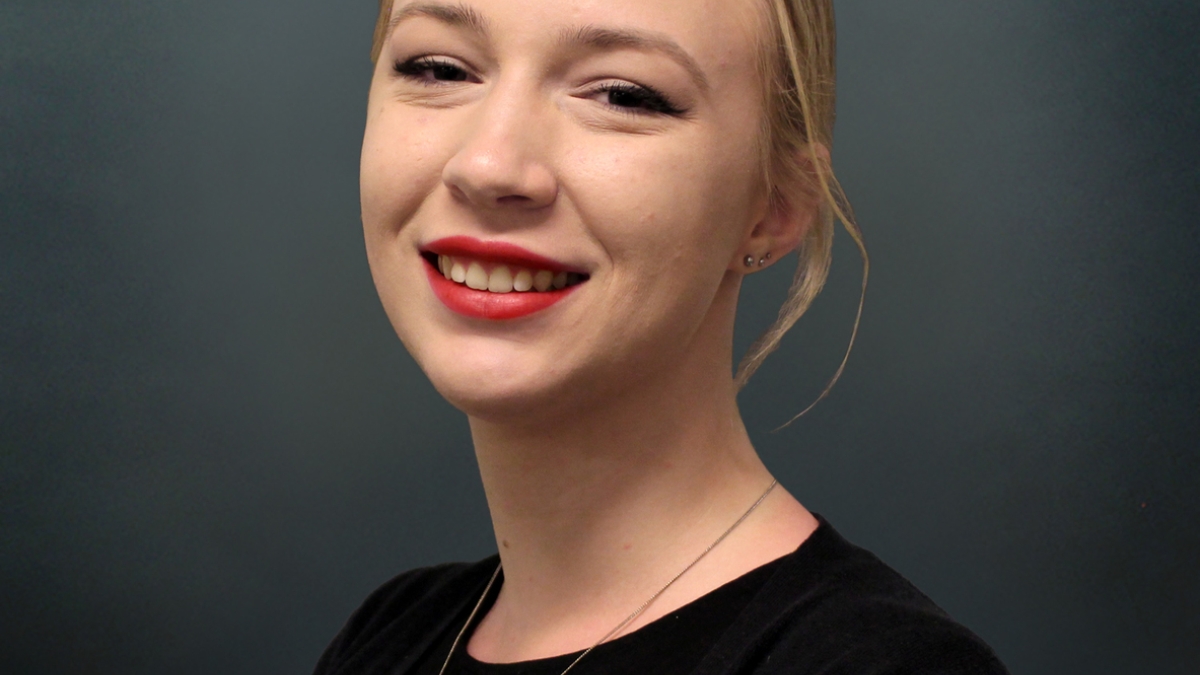
Communication major Madelaine Beitzel turned her internship into a full-time job.
Communication majors are highly sought-after job candidates across many professional fields due to their ability to communicate effectively across varied situations.
So it’s only natural that communication interns are also in high demand.
"All fields consistently look for capable communication-focused college students to help and hire,” said Kristin Dybvig-Pawelko, internship director at the Hugh Downs School of Human Communication at Arizona State University.
“For our students, internship opportunities facilitate wide exploration of the communication field, since there are so many factors to consider, process and understand.”
Dybvig-Pawelko tells her students that internships provide unique skills and opportunities that they would not receive otherwise.
In the best-case scenario, an internship may lead to a full-time job upon (or even before) graduation.
This is how communication major Madelaine Beitzel got the job she’s in now.
Beitzel interned in the summer of 2018 as a marketing coordinator for Kimley-Horn, a planning and design consulting firm. By the end of the year, the company offered her a full-time position upon her spring graduation.
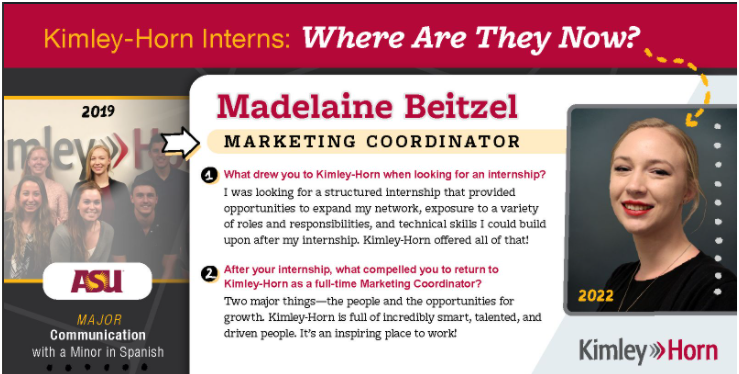
Kimley-Horn's post on LinkedIn about hiring Madelaine Beitzel.
“Initially, I only had an internship for the summer, but asked if I could extend it,” said Beitzel. "I was promptly told ‘no’ because it wasn’t in their business plan. However, I think they quickly saw how the support I was able to provide helped the team. They offered to extend my internship on a part-time basis and were very accommodating to match my class schedule. That helped them understand my potential as a team member post-graduation.”
Beitzel earned six course credits in Dybvig-Pawelko’s COM 484 Internship course by working at Kimley-Horn. All of those hours counted toward her communication degree.
Not only do interns gain technical knowledge in the industry of their choice, but they also learn how to interact with professionals in a workplace setting. In addition, they develop essential skills like time management, organization, adaptability, problem-solving and teamwork, many of the same skills they learned in their communication coursework.
Beitzel says she remembers being surprised by the amount of responsibility she was given so quickly in her internship.
"I was trained, briefed on the task, then given the freedom to drive the process and get it done," she said.
When asked which communication courses were helpful for this internship, she noted Interpersonal Communication, Advanced Research Methods in Communication and Public Speaking.
"Those courses helped build my critical thinking abilities, improve my research and writing skills, and become more comfortable working and presenting in large teams full of people with different personalities,” Beitzel said.
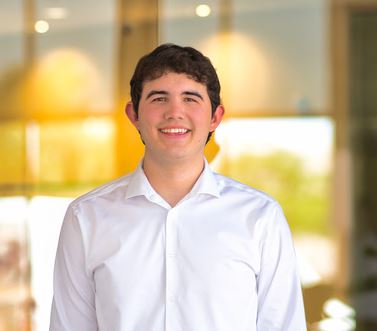
Communication major Zach Rangel
Communication major Zach Rangel is working as a marketing intern with Versant Capital Management Inc., a wealth management and investment firm.
Rangel, who hails from Austin, Texas, says he has always been interested in marketing, sales and public relations.
“For me, studying communication provides a great foundation for a career in these areas,” he said.
Rangel found this paid summer internship by applying to every communication-related internship he found, both through ASU and on the internet.
Rangel said the internship interested him because he wanted to be able to focus on marketing and grow his social media marketing experience.
"Versant has given me the opportunity to reach those goals," he said. “When I interviewed with Versant Capital, it just seemed like the perfect fit. My boss and mentor, Lisa Greve, has a degree in communication and was looking for an intern in a communication degree program. I felt like I could learn a lot from her.
"I was asked to stay on after my summer internship and have been interning part time all year.”
Greve, a marketing and administration manager at Versant, says they had many interns from ASU, some of whom have gone on to full-time jobs with the firm after graduation.
“Because Versant is a wealth management and investment firm, we typically have a finance or econ major apply for internships. Zach thought outside of the box and asked if he could do a marketing internship to get hands-on business experience,” Greve said.
She says Rangel is thoughtful and hard-working and is involved in many areas of their marketing activities.
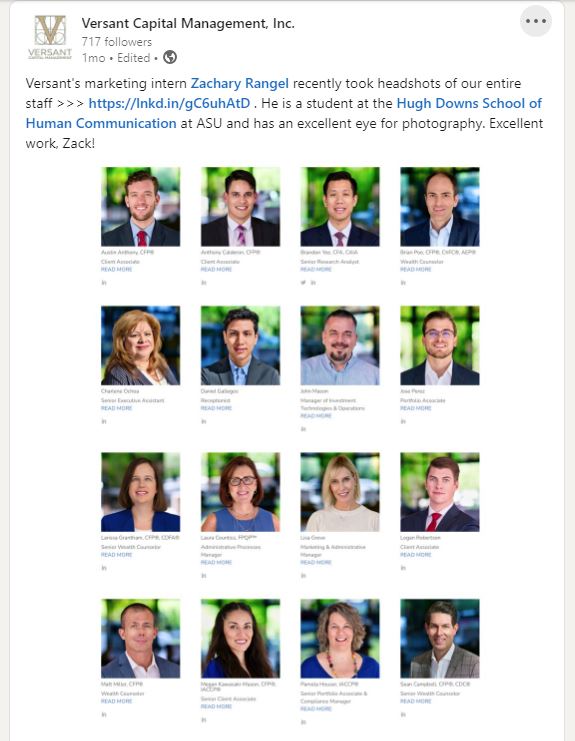
A posting by Versant Capital on LinkedIn about Zach Rangel's work as an intern.
“He recently helped to create a series of 16 short videos around the topic ‘Financial Tips for Young Adults.’ The project required multiple skills, such as strategic planning, researching, writing, graphic design and video editing. Once the videos launched, he helped to track and interpret data and analytics,” Greve said.
In terms of advice for current students who are considering an internship, Beitzel says: “Before you even start applying, my advice is to really think about what you want out of an internship.”
She adds, “Identifying your must-haves will help you narrow your search and land an internship that provides you with real value, not just a job you can put on your resume. You should ask yourself questions like ‘What skills do you want to grow or add?’ ‘What industries interest you?’ ‘Do you have specific values that your future company must align with?’ ‘What kind of people do you enjoy working with?’ It’s also helpful to think about what you don’t want. Take advantage of the opportunity to ask questions in your interviews to get clarity on what you might enjoy doing long-term.”
More Sun Devil community
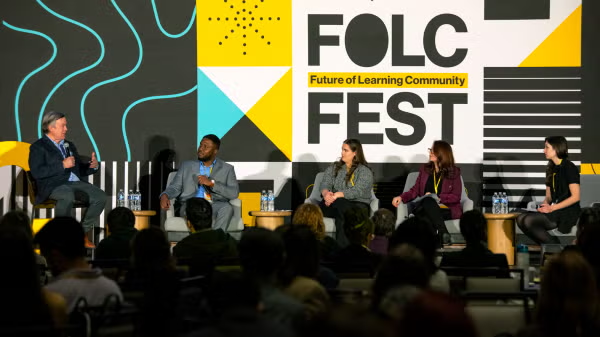
FOLC Fest 2025 explores Principled Innovation, leadership and learning at ASU
"Principled Innovation is about using our creativity, knowledge and resources to make decisions that ultimately benefit humanity…

These Sun Devils are inspiring the next generation of female athletes
This year, Women's History Month is celebrating the theme “Moving Forward Together! Women Educating and Inspiring Generations.”…
Founders’ Day 2025 celebrates legacy and innovation at ASU
"Honor the past, celebrate the present and invent the future." This motto encapsulates the spirit of Founders' Day, a…

